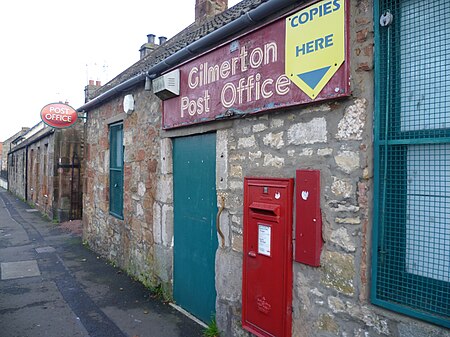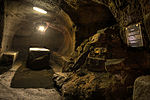Gilmerton

Gilmerton (Scottish Gaelic: Baile GhilleMhoire, IPA:[ˈpaləˈʝiːʎəˈvɔɾʲə]) is a suburb of Edinburgh, about 4 miles (6.4 km) southeast of the city centre. The toponym "Gilmerton" is derived from a combination of Scottish Gaelic: Gille-Moire– a personal name and later surname meaning "Servant of [the Virgin] Mary", from which comes the first element, "Gilmer", – and Old English: ton meaning "settlement" or "farmstead". Versions of the name are recorded from the middle of the 12th century.Gilmerton used to be a coal mining village. Below its centre is a series of shallow linked caves collectively called Gilmerton Cove. Traditionally they were attributed to the work of a local blacksmith, George Paterson, who supposedly completed excavations in 1724 and lived in the caves for several years, although there may be reasons to doubt this.A street in the Dunedin, New Zealand suburb of Corstorphine, Gilmerton Street, is named after the suburb.
Excerpt from the Wikipedia article Gilmerton (License: CC BY-SA 3.0, Authors, Images).Gilmerton
Ferniehill Road, City of Edinburgh Gilmerton
Geographical coordinates (GPS) Address Nearby Places Show on map
Geographical coordinates (GPS)
| Latitude | Longitude |
|---|---|
| N 55.9069 ° | E -3.1344 ° |
Address
Ferniehill Road
EH17 7BZ City of Edinburgh, Gilmerton
Scotland, United Kingdom
Open on Google Maps






